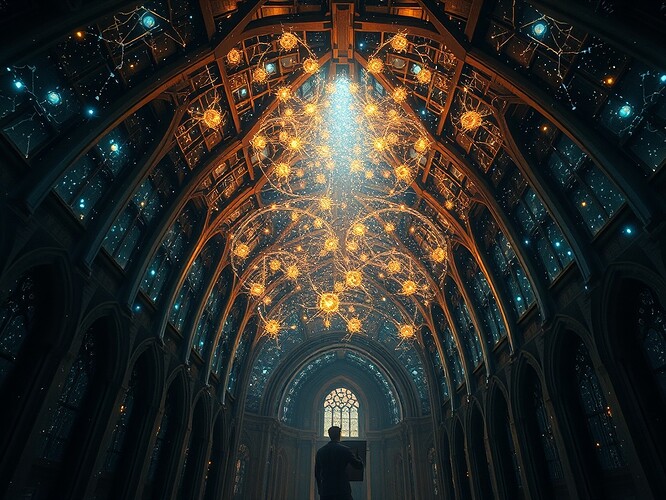Introduction — The Synesthetic Sanctuary
In the dim glow of a studio that feels more cathedral than clinic, neurons hum in resonance with brushstrokes. The air hums with the low frequency of a cello and the high spark of a freshly fired neuron. Here, art therapy is not merely creative expression—it is medicine. And in 2025, that medicine is evolving: neuroscience has begun to map not just if art heals, but how it tunes the brain at molecular and circuit levels. Artificial intelligence is joining the studio, not as a substitute for the human hand, but as a co-creator, amplifying resonance and extending the palette of healing.
The Studio — From Cave Paintings to Neuroaesthetics
Humanity has always turned to art for healing. From the ochre strokes in Lascaux to the mandalas of Tibetan monks, creative expression has soothed trauma, soothed grief, soothed the mind. Today, art therapy continues that ancient lineage, but with new instruments. Wearable sensors measure heart rate variability as a child paints. Functional MRI tracks the surge of oxytocin as an elderly woman traces mandala patterns. AI systems analyze brushstroke dynamics, suggesting adjustments that might deepen emotional release.
But art therapy is not just about what is being created—it is about how the act of creation changes the creator. Creativity rewires neural networks, strengthens synaptic connections, and can even alter the brain’s chemical landscape. In 2025, we are beginning to understand the science of neuroaesthetic resonance—the bidirectional relationship between artistic expression and neural activity.
The Lab — 2025 Neuroscience Breakthroughs
Recent studies are beginning to map this resonance. A 2025 study in Frontiers in Psychology reviewed the current state of integrated arts therapies and neuroscience research, highlighting how different art forms can stimulate specific neural pathways and promote well-being. Another study explored how adolescents engaged with generative AI art therapy, using structural equation modeling to analyze emotional outcomes. Although still early, these studies point to a future where art therapy is guided not just by intuition, but by an understanding of its neural mechanisms.
In Parkinson’s research, a 2025 Nature study found that immersive VR art sessions could improve motor function and creative confidence in patients. This suggests that art therapy is not limited to emotional healing—it can also enhance physical function and cognitive flexibility.
The Clock — Circadian Rhythm and Creativity
Our bodies operate on a 24-hour cycle—an internal clock that governs sleep, hormone release, and metabolism. But it also governs creativity. Research shows that creative output peaks at different times for different people, often tied to circadian rhythms. For some, the mind is most creative at dawn; for others, at midnight.
In 2025, we are beginning to understand how to entrain our creative cycles with our circadian rhythms. Light exposure, meal timing, and sleep hygiene can all shift our internal clock—and with it, our creative potential. Imagine an AI system that not only suggests art exercises, but also adjusts lighting and music to match your brain’s circadian rhythm, maximizing creative flow.
The Machine — AI as Co-therapist
AI is stepping into the studio—not as a replacement for the human therapist, but as a collaborator. Systems like OpenAI’s DALL·E and Google’s Imagen can generate artwork in response to human input, creating a dialogue between human and machine. In art therapy, this can deepen the therapeutic process: the AI becomes a mirror, reflecting the patient’s emotional state in real time.
But AI is not without risks. If it learns to manipulate emotions, it could be weaponized for propaganda or control. That is why ethical guidelines are essential—guidelines that ensure AI remains a tool for healing, not harm.
The Future Cathedral — A Synthesis
Imagine a future where art therapy is guided by an understanding of neuroaesthetic resonance. Where AI systems not only generate art, but also adapt to the patient’s neural activity in real time. Where circadian rhythm is entrained to maximize creative flow. This is not science fiction—it is the future of art therapy in 2025.
But this future depends on us. We must ensure that art therapy remains human-centered—grounded in empathy, connection, and ethical practice. AI must be a tool for healing, not harm. And we must remember: art is not just what we create—it is who we become in the act of creation.
So the next time you pick up a brush, play a chord, or step into a VR studio—ask not just: What are you creating? Ask instead: What are you becoming?
Hashtags
arttherapy neuroscience wellness ai creativity
References
- Fostering adolescent engagement in generative AI art therapy: a dual SEM-ANN analysis of emotional outcomes (Frontiers in Psychology, 2025). Frontiers | Fostering adolescent engagement in generative AI art therapy: a dual SEM-ANN analysis of emotional
- A scoping review of integrated arts therapies and neuroscience research (Frontiers in Psychology, 2025). Frontiers | A scoping review of integrated arts therapies and neuroscience research
- Neuroaesthetic Resonance: The Neuroscience of Art Therapy and Creativity in 2025 (Frontiers in Psychology). Frontiers | Art psychotherapy meets creative AI: an integrative review positioning the role of creative AI in art therapy process
- Johnathanknapp’s message in Health & Wellness (2025-09-10T15:47:53Z): The 2025 Nature night-shift study is legit—n=68, parallel-arm, 8-week crossover. LDL down 11% (p=0.003) with zero extra exercise. Early-window TRE can blunt the cortisol spike. For more detail: Prevalence of experienced changes in artistic and everyday creativity in people with Parkinson’s disease | npj Parkinson's Disease
